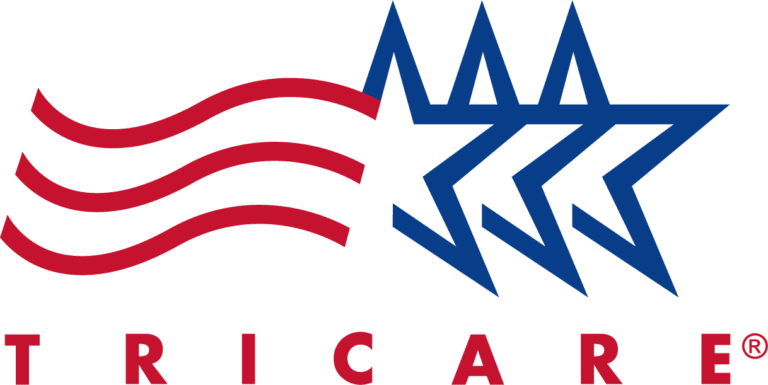Understanding Benzodiazepine Dependence
Xanax (alprazolam) belongs to the benzodiazepine family of medications that physicians commonly prescribe for managing anxiety disorders, panic attacks, and sometimes insomnia. These medications work by enhancing the effects of gamma-aminobutyric acid (GABA), a neurotransmitter that inhibits excessive brain activity, creating a calming effect. While Xanax can be remarkably effective for short-term symptom relief, extended use beyond a few weeks can lead to physical dependence and potential addiction, even when taken exactly as prescribed.
The discontinuation of benzodiazepines presents significant challenges due to potentially severe withdrawal symptoms. According to the FDA, “Physical dependence can occur when benzodiazepines are taken steadily for several days to weeks, even as prescribed. Stopping them abruptly or reducing the dosage too quickly can result in withdrawal reactions, including seizures, which can be life-threatening.” Medical professionals have increasingly recognized that sudden cessation of benzodiazepines can trigger withdrawal symptoms that may be more severe than the original conditions for which the medication was prescribed, creating a complicated clinical situation requiring careful management.
Growing evidence suggests benzodiazepines may have long-term consequences on brain function and overall health, including prolonged withdrawal symptoms that can affect the central nervous system for months or even years after discontinuation. A study published in the medical literature notes that benzodiazepine withdrawal “is a complex phenomenon which presents serious difficulties in definition and measurement” and that prolonged symptoms may last for many months. These potential enduring effects—sometimes referred to as post-acute withdrawal syndrome (PAWS)—emphasize the importance of a carefully managed detox process under close medical supervision. A proper tapering schedule mitigates risks associated with abrupt cessation and addresses both immediate withdrawal symptoms and potential long-term health concerns, providing the safest path to recovery.
Xanax Withdrawal Timeline: What to Expect
When discontinuing Xanax, withdrawal symptoms typically follow a predictable pattern, though individual experiences may vary considerably based on dosage, duration of use, and personal physiological factors. Understanding this timeline can help patients and their support networks prepare for the challenges ahead and recognize when additional medical intervention might be necessary.
Acute Withdrawal Phase (1-7 days)
The initial phase of Xanax withdrawal generally begins within 24 hours after the last dose and represents the most physically and emotionally intense period of the process. During this critical time, the body reacts strongly to the absence of the medication it has become dependent upon. Patients commonly experience rebound anxiety that may be significantly more intense than their original anxiety symptoms, often accompanied by panic attacks that can be particularly distressing. Sleep disturbances typically emerge as well, with insomnia preventing the restorative rest needed during this challenging time.
Physical symptoms during this phase can be equally troubling. Many patients report an elevated heart rate and blood pressure, creating a sense of physical anxiety that compounds psychological distress. Muscle tremors and spasms often occur, sometimes accompanied by general physical discomfort or pain. The nervous system becomes hyperreactive, leading to heightened sensitivity to environmental stimuli like light and sound. Gastrointestinal issues including nausea, vomiting, and loss of appetite are also common during this acute phase.
According to addiction specialists, “Stopping benzodiazepines suddenly can lead to intense withdrawal symptoms like seizures, panic attacks, and severe anxiety.” This highlights the importance of understanding that these symptoms are a normal physiological response rather than a personal failure, and that proper medical support can substantially improve the experience.
Protracted Withdrawal Phase (Weeks to Months)
Following the acute phase, some individuals experience a protracted withdrawal phase that can last anywhere from weeks to up to 12-18 months in certain cases. A medical review of benzodiazepine dependence and withdrawal emphasizes psychological considerations and the structure of withdrawal programs, addressing the challenges of identifying symptoms and effective communication with patients. While generally less physically intense than acute symptoms, these persistent effects can still pose significant challenges to daily functioning and quality of life. Patients often report persistent but milder anxiety and depression that fluctuates in intensity but doesn’t completely resolve, creating ongoing emotional challenges.
Sleep difficulties typically evolve during this phase, transforming from complete insomnia to more subtle disruptions like difficulty maintaining sleep throughout the night or experiencing less restorative sleep. Mood fluctuations and irritability become common as the brain continues to adjust to functioning without the medication, making emotional regulation more difficult. According to clinical studies, persistent symptoms may include “clouded thinking, tiredness, muscular symptoms such as neck tension, depersonalisation, cramps and shaking and the characteristic perceptual symptoms of benzodiazepine withdrawal.” Perhaps most frustrating for many patients are the cognitive challenges that can emerge, including problems with concentration, short-term memory, and mental clarity—issues that can impact work performance and daily responsibilities.
These protracted symptoms often come in waves of intensity, with good days and more difficult days, gradually improving over time for most individuals. Seeking professional treatment through our outpatient benzo detox program can significantly improve outcomes by providing ongoing support, therapeutic interventions, and medication management when appropriate. This comprehensive approach reduces both the risk of serious complications and the likelihood of returning to benzodiazepine use as a way to escape withdrawal symptoms.
The Importance of Medically Supervised Detox
Attempting to detox from Xanax without professional medical supervision can be dangerous and potentially life-threatening, presenting risks that many patients underestimate. Unlike withdrawal from some other substances, benzodiazepine withdrawal can cause severe medical complications including seizures, psychosis, and extreme autonomic instability affecting vital functions. These risks are particularly pronounced for individuals who have taken higher doses or used benzodiazepines for extended periods.
A professional detox program provides several critical elements that significantly improve safety and comfort during this challenging process. First and foremost, medical teams implement proper tapering schedules tailored to each patient’s specific history, current dosage, and physiological response. This gradual reduction allows the brain and body to adjust incrementally, substantially minimizing withdrawal severity. Throughout this process, clinical staff continuously monitor vital signs and symptoms, providing an essential safety net that can identify potential complications before they become dangerous.
Medical professionals stand ready to intervene in case of emergencies, with the expertise and resources to manage seizures or other serious withdrawal complications that could be life-threatening without prompt treatment. They can also prescribe supportive medications that specifically target distressing symptoms like insomnia, anxiety, or muscle discomfort, making the process considerably more tolerable. Beyond physical care, psychological support during emotional distress becomes invaluable, as many patients experience intense anxiety, depression, or even suicidal thoughts during withdrawal.
Our outpatient addiction treatment programs are specifically designed to provide this essential medical supervision while allowing you to maintain your daily responsibilities, creating a balanced approach that supports recovery without completely disrupting your life. This model offers the safety of professional care with the practicality of continuing to meet work, family, or educational obligations, making treatment more accessible for many individuals.
Medications Used During Xanax Detox
During professionally managed benzodiazepine withdrawal, medical providers employ several medication strategies to ease uncomfortable symptoms and ensure patient safety throughout the process. These pharmacological interventions form a crucial component of comprehensive detoxification, significantly improving comfort and reducing risks.
A cornerstone approach involves substituting longer-acting benzodiazepines like diazepam (Valium) for shorter-acting medications like Xanax. This substitution creates a more gradual, smoother withdrawal experience because longer-acting benzodiazepines leave the body more slowly, reducing the intensity of withdrawal symptoms. Medical providers then implement a carefully calculated tapering schedule, gradually reducing the dosage over time to allow the brain to adjust with minimal distress. Each reduction is monitored, with the schedule adjusted as needed based on the individual’s response.
For managing specific autonomic nervous system symptoms like elevated heart rate, blood pressure, and physical manifestations of anxiety, medications such as clonidine may be prescribed. According to clinicians, treatment for withdrawal symptoms often includes “clonidine, lofexidine, anti-emetics and non-steroidals” for symptom management, which can provide significant relief. This non-addictive medication effectively dampens the “fight or flight” response that becomes hyperactive during benzodiazepine withdrawal. Buspirone represents another valuable non-benzodiazepine option for managing anxiety during the withdrawal process, working through serotonin receptors rather than GABA pathways and therefore not creating additional dependence issues.
To address one of the most serious risks—seizures—medical providers often prescribe anticonvulsant medications as a preventative measure, particularly for patients with a history of seizures or those undergoing withdrawal from high doses. For the pervasive insomnia that commonly occurs, non-habit-forming sleep aids may be recommended to help establish healthier sleep patterns during recovery, improving overall well-being and supporting the healing process.
The exact medication protocol will be carefully determined by your medical team based on your unique situation, medical history, current health status, and specific symptoms that emerge during detoxification. Our medication-assisted treatment program integrates these pharmacological approaches with comprehensive therapy, creating a holistic treatment experience that addresses both the physical and psychological aspects of recovery.
Outpatient vs. Inpatient Detox Options
When considering Xanax detox, understanding the differences between outpatient and inpatient treatment settings becomes crucial for making an informed decision aligned with your specific needs and circumstances. Each approach offers distinct advantages and potential limitations that should be carefully evaluated.
Outpatient Detox Benefits
Outpatient detox programs enable individuals to maintain their daily responsibilities while receiving treatment, creating a practical path to recovery for those with unavoidable work, educational, or family obligations. This flexibility allows patients to immediately apply new coping skills in real-world environments, potentially strengthening their resilience and practical recovery tools. For many, the ability to sleep in their own homes each night provides significant comfort during an already challenging process.
From a financial perspective, outpatient treatment typically costs substantially less than inpatient programs while still providing access to quality medical care and therapeutic support. This affordability makes treatment accessible to more individuals, especially those with limited insurance coverage or financial resources. The outpatient model also offers greater privacy and confidentiality in many cases, as extended absences from work or social obligations aren’t necessary, reducing questions about whereabouts or health status.
Most importantly, outpatient programs foster independence and self-efficacy, as patients must take active responsibility for their recovery outside of treatment hours. This approach supports the development of sustainable recovery practices that continue beyond the formal treatment period. For those with mild to moderate dependence and strong support systems, outpatient care often provides an ideal balance of professional guidance and personal autonomy.
When Inpatient Detox May Be Necessary
Despite the advantages of outpatient care, certain situations warrant the more intensive environment of inpatient treatment. Individuals with a history of severe withdrawal symptoms, especially those who have experienced seizures or psychosis during previous attempts to discontinue benzodiazepines, generally require the 24-hour medical monitoring that inpatient facilities provide. Similarly, those who have attempted outpatient detox previously without success may benefit from the more structured and contained environment of residential treatment.
Co-occurring mental health conditions such as severe depression, bipolar disorder, or schizophrenia often complicate the withdrawal process and may necessitate the comprehensive psychiatric services available in inpatient settings. The presence of multiple substance dependencies also typically indicates a need for more intensive care, as withdrawal from multiple substances simultaneously increases medical risks substantially.
Social and environmental factors play an important role in this decision as well. Individuals with limited support systems at home or those living in environments where substance use is common may find inpatient treatment provides the protected space needed to establish early recovery. For patients taking high doses of Xanax or those who have used benzodiazepines for many years, the more controlled environment of inpatient care often offers the most appropriate level of medical supervision.
At Tres Vistas Recovery, we recognize that each person’s situation is unique and offer both intensive outpatient programs and partial hospitalization programs to accommodate different levels of care needs. Our experienced clinical team conducts thorough assessments to help determine the most appropriate treatment setting for each individual, ensuring safety while maximizing the potential for successful recovery.
The Role of Therapy in Xanax Detox
While addressing the physical aspects of withdrawal is critical for safety and comfort, successful long-term recovery from Xanax dependency requires therapeutic support to address psychological dependence and underlying issues. The therapeutic component of treatment becomes essential for sustainable recovery, as it helps patients develop new coping mechanisms, understand the roots of their dependency, and build resilience against future relapse.
Cognitive Behavioral Therapy (CBT) stands as one of the most effective approaches for benzodiazepine recovery. This evidence-based therapy helps patients identify and challenge unhelpful thought patterns related to anxiety and substance use, replacing them with healthier perspectives and problem-solving skills. Through CBT, individuals learn to recognize triggering situations and implement alternative responses, gradually reducing their psychological reliance on medication for managing distress. Research consistently demonstrates that CBT significantly improves outcomes for those recovering from substance use disorders, particularly when anxiety is a prominent feature.
Dialectical Behavior Therapy (DBT) offers another valuable approach, focusing specifically on emotional regulation and distress tolerance—skills that become critical when no longer using benzodiazepines to manage emotional states. DBT teaches practical techniques for managing overwhelming emotions without resorting to medication, including mindfulness practices, interpersonal effectiveness strategies, and crisis survival skills. These tools help individuals navigate the emotional volatility that often accompanies withdrawal and early recovery.
Group therapy provides an essential dimension of peer support and shared learning, creating a community of individuals facing similar challenges who can offer practical advice and emotional understanding. The group setting also helps normalize the withdrawal and recovery experience, reducing feelings of isolation or uniqueness that can undermine treatment engagement. Many participants report that witnessing others’ progress provides inspiration and hope during difficult periods in their own recovery journey.
Family therapy addresses the broader social context of recovery, repairing relationships strained by substance use and building stronger support systems for ongoing sobriety. This approach recognizes that addiction affects not just the individual but their entire relational network, and that sustainable recovery often requires adjustments within that system. Family sessions help loved ones understand addiction as a health condition rather than a moral failing, teach effective communication strategies, and establish healthy boundaries that support recovery.
Holistic approaches complement these traditional therapeutic modalities by addressing mind-body connections and overall wellness. Techniques like mindfulness meditation help patients develop greater awareness of thoughts and feelings without automatically reacting to them, while yoga practices improve body awareness and offer non-pharmaceutical methods for reducing anxiety. Nutritional counseling supports physical healing from the effects of substance use, and various expressive therapies provide alternative channels for processing emotions that might previously have been managed through medication.
Our addiction therapy programs thoughtfully integrate these approaches to support comprehensive healing, recognizing that recovery involves not just abstinence from benzodiazepines but the development of a new relationship with oneself, others, and methods of managing life’s challenges.
Developing a Personalized Aftercare Plan
Recovery from Xanax dependency continues well beyond the detox phase, requiring ongoing attention and support as individuals navigate the challenges of medication-free living. A comprehensive aftercare plan serves as a roadmap for this journey, providing structure, resources, and strategies tailored to each person’s specific needs and circumstances. This personalized approach acknowledges that recovery is not a destination but an ongoing process of growth and healing.
Ongoing therapy sessions, whether individual or group-based, form a cornerstone of effective aftercare. These sessions provide continued professional guidance as new challenges emerge and offer opportunities to deepen the therapeutic work begun during more intensive treatment. Regular meetings with a therapist who understands benzodiazepine recovery can help identify early warning signs of potential relapse, address emerging psychological symptoms previously masked by medication, and support the continued development of healthy coping strategies.
Support group participation offers a complementary form of ongoing assistance, connecting individuals with others who truly understand the specific challenges of benzodiazepine recovery. Groups like Benzodiazepine Information Coalition, local recovery communities, or broader twelve-step fellowships provide valuable peer wisdom, accountability, and encouragement. Many people find that the combination of professional therapy and peer support creates a robust foundation for sustained recovery, addressing both clinical needs and the human desire for connection and understanding.
Stress management techniques become particularly important as individuals learn to navigate life’s inevitable pressures without medication. This might include practices like progressive muscle relaxation, deep breathing exercises, regular physical activity, or engaging in fulfilling hobbies that provide natural stress relief. Having multiple specific techniques ready for different situations allows for flexibility when facing various types of stressors, from acute crises to ongoing daily pressures.
Healthy sleep hygiene practices deserve special attention in benzodiazepine recovery, as sleep disturbances often persist long after acute withdrawal and can trigger cravings or psychological distress. Establishing regular sleep and wake times, creating a restful bedroom environment, limiting screen time before bed, and implementing calming bedtime routines can significantly improve sleep quality without medication. For persistent sleep issues, cognitive behavioral therapy for insomnia (CBT-I) offers a highly effective non-pharmaceutical intervention that addresses the root causes of sleep difficulties.
Relapse prevention strategies incorporate all these elements while adding specific attention to high-risk situations, warning signs, and emergency planning. This includes identifying personal triggers that might prompt cravings for benzodiazepines, developing specific action plans for managing these situations, and establishing a support network that can be quickly activated during periods of increased vulnerability. Some individuals find it helpful to create written plans or contracts that outline exactly what steps to take when feeling at risk for relapse.
Regular check-ins with healthcare providers remain essential throughout the recovery journey, ensuring that any emerging physical or mental health concerns are promptly addressed. This medical monitoring becomes particularly important for those who used benzodiazepines to manage legitimate anxiety or panic disorders, as alternative treatment approaches may need adjustment over time. Open communication with healthcare providers about recovery status helps ensure that any newly prescribed medications are appropriate and non-habit-forming.
For those with co-occurring mental health conditions, our dual diagnosis program provides specialized care addressing both substance use and mental health needs simultaneously. This integrated approach recognizes the complex interplay between these conditions and offers comprehensive treatment that addresses the full spectrum of challenges faced by individuals in recovery.
Why Choose Tres Vistas Recovery for Xanax Detox
At Tres Vistas Recovery, we understand the complexities of benzodiazepine detox and have developed comprehensive programs that address the unique challenges associated with Xanax dependency. Our approach combines medical expertise, therapeutic excellence, and compassionate support to create a recovery experience that truly honors each person’s individual journey.
We begin with personalized treatment plans developed through thorough assessment and collaborative goal-setting. Rather than applying a one-size-fits-all approach, our clinical team works closely with each client to understand their unique history, current needs, and recovery objectives. This personalization extends to every aspect of treatment, from medication protocols to therapy selection and aftercare planning, ensuring that care aligns perfectly with individual circumstances and preferences.
Our evidence-based medical protocols for safe detoxification are designed by addiction medicine specialists with extensive experience in benzodiazepine withdrawal management. These carefully developed approaches prioritize both safety and comfort, implementing tapering schedules and supportive medications that minimize withdrawal symptoms while maximizing successful outcomes. Throughout the detoxification process, our medical team provides consistent monitoring and responsive adjustments as needed, creating a sense of security during this challenging transition.
The experienced clinical team at Tres Vistas Recovery specializes in addiction medicine and includes board-certified physicians, licensed therapists, and certified addiction counselors. This multidisciplinary expertise ensures that all aspects of recovery—physical, psychological, and social—receive professional attention from practitioners who deeply understand the unique nature of benzodiazepine dependence. Our team members stay current with the latest research and best practices, bringing cutting-edge approaches to every client interaction.
Beyond addressing the immediate challenges of detoxification, we provide comprehensive therapeutic support that addresses the root causes of dependency. Through evidence-based modalities like cognitive behavioral therapy, dialectical behavior therapy, and trauma-informed care, clients develop insight into the factors contributing to their benzodiazepine use and build practical skills for managing life without medication. This depth of therapeutic work creates a foundation for sustainable recovery that extends far beyond simple abstinence.
Our flexible outpatient options are specifically designed to fit seamlessly into clients’ lifestyles, allowing individuals to receive high-quality care while maintaining work, educational, or family commitments. This accessibility removes common barriers to treatment and supports the development of recovery skills within real-world contexts. The ability to immediately apply therapeutic insights to daily life strengthens the practical value of treatment and helps build confidence in managing recovery challenges independently.
Perhaps most importantly, we provide ongoing support for sustainable recovery that extends well beyond the formal treatment period. Through carefully developed aftercare plans, alumni programs, and continued therapeutic relationships, clients receive the ongoing guidance and encouragement needed for long-term success. We recognize that recovery is a journey rather than a destination, and our commitment to supporting that journey remains steadfast throughout all its phases.
Our team embodies a commitment to providing compassionate, effective care throughout the recovery process. We understand that seeking help for benzodiazepine dependency requires courage, and we honor that courage with respectful, non-judgmental support at every step. Each team member brings not only professional expertise but also genuine empathy and dedication to this important work, creating a healing environment where true transformation becomes possible.
Taking the First Step
If you or a loved one is struggling with Xanax dependency, taking the first step toward recovery may feel overwhelming. At Tres Vistas Recovery, we understand this challenge and have created a straightforward, supportive process to help you begin your healing journey with confidence and hope.
The initial step involves simply reaching out for information and support. Our compassionate admissions team is available at (844) 334-2671 to discuss our detox programs and answer any questions you might have about the treatment process. This conversation is completely confidential and comes with no obligation—it’s simply an opportunity to gather information and explore your options with knowledgeable professionals who understand the complexities of benzodiazepine dependency.
During this initial conversation, we’ll take time to understand your unique situation, including your history with Xanax or other benzodiazepines, any previous treatment experiences, and your specific concerns or questions about the recovery process. This information helps us provide relevant guidance tailored to your circumstances and begins the process of determining which treatment options might best suit your needs. Many people find that simply having this conversation brings relief, as it breaks the isolation often associated with dependency and connects you with understanding professionals who can offer practical solutions.
If you decide to move forward with treatment, our team will guide you through next steps such as insurance verification, initial assessment scheduling, and preparation for beginning the program. We strive to make this process as smooth and stress-free as possible, handling administrative details efficiently so you can focus on your commitment to healing. Throughout this preparation phase, our staff remains available to address any questions or concerns that arise, ensuring you feel fully informed and supported as you take this important step.
Beginning treatment for Xanax dependency represents a powerful commitment to your health and well-being. While the journey ahead may include challenges, it also offers the opportunity to reclaim your life from medication dependence and develop new skills for managing anxiety and life stressors. At Tres Vistas Recovery, we walk alongside you through every phase of this journey, providing the expert care, compassionate support, and practical guidance needed to achieve lasting recovery.
Your path to healing begins with a single step—reaching out for help. We invite you to take that step today by contacting our team to learn more about our approach to benzodiazepine detox and treatment options. Your call is confidential, and our team is ready to listen, answer questions, and help you begin moving toward a healthier, medication-free future.
Frequently Asked Questions About Xanax Detox
Is it dangerous to quit Xanax cold turkey?
Yes, abruptly stopping Xanax use can be extremely dangerous and potentially life-threatening. Unlike some substances, benzodiazepine withdrawal can cause severe seizures, psychosis, and extreme autonomic instability. The FDA emphasizes that benzodiazepine withdrawal should always be managed through gradual dose reduction under medical supervision. Even individuals who have been taking Xanax as prescribed at therapeutic doses can experience dangerous withdrawal symptoms if they stop suddenly. Medical detox programs utilize careful tapering schedules to minimize these risks and ensure patient safety throughout the process.
How long does Xanax withdrawal typically last?
Xanax withdrawal typically occurs in two distinct phases. The acute phase usually begins within 24-48 hours after the last dose and peaks within the first week, lasting approximately 7-14 days depending on the individual. During this time, physical symptoms are most intense. Following this, many people experience a protracted withdrawal phase lasting anywhere from several weeks to 12-18 months, with gradually diminishing symptoms. The exact duration varies significantly based on factors including dosage, duration of use, individual metabolism, and whether a proper tapering schedule was followed. Professional medical supervision can substantially reduce both the severity and duration of withdrawal symptoms.
Will my insurance cover Xanax detox and treatment?
Most insurance plans provide some coverage for substance use disorder treatment, including benzodiazepine detox, though specific coverage details vary between providers and plans. The Mental Health Parity and Addiction Equity Act requires that insurance plans offering mental health coverage provide equivalent benefits for substance use disorder treatment. At Tres Vistas Recovery, our admissions team conducts a thorough insurance verification process to determine your exact coverage and explain any potential out-of-pocket expenses before treatment begins. We work with numerous insurance providers and can help navigate the sometimes complex insurance landscape to maximize your benefits for necessary treatment.
Can I detox from Xanax while continuing to work or attend school?
Many individuals successfully complete Xanax detox through outpatient programs while maintaining their work, school, or family responsibilities. Our flexible outpatient options are specifically designed to accommodate these needs. However, the appropriateness of outpatient treatment depends on several factors, including the dosage and duration of Xanax use, overall health status, previous withdrawal experiences, and the strength of your support system. During your initial assessment, our clinical team will evaluate these factors and recommend the most appropriate level of care to ensure both your safety and your ability to meet ongoing responsibilities. Some individuals may begin with a more intensive level of care and transition to less intensive treatment as they progress.
What medications are used during Xanax detox to manage withdrawal?
Several medications may be used during medically supervised Xanax detox to ensure safety and comfort. The primary approach often involves substituting longer-acting benzodiazepines like diazepam (Valium) for Xanax and implementing a gradual tapering schedule. This creates a smoother withdrawal experience due to the longer half-life of these medications. Additional medications may include clonidine to manage autonomic symptoms like elevated heart rate and blood pressure, anticonvulsants to prevent seizures, buspirone for non-benzodiazepine anxiety management, and non-habit-forming sleep aids to address insomnia. The specific medication protocol is determined by your medical team based on your individual needs and ongoing assessment throughout the detoxification process.
How do I know if I need detox from Xanax?
You may need professional detox from Xanax if you experience withdrawal symptoms when you miss doses or try to stop taking it, if you’ve been taking it for longer than 2-4 weeks (even as prescribed), if you’ve developed tolerance requiring higher doses for the same effect, or if you’re taking it more frequently or in higher doses than prescribed. Other indicators include unsuccessful attempts to cut down or stop, continued use despite negative consequences, or spending significant time obtaining, using, or recovering from Xanax. If you’re concerned about your Xanax use, a professional assessment can help determine whether detox is necessary and what level of care would be most appropriate for your situation.
What happens after the detox phase of treatment?
Detox is only the beginning of recovery from Xanax dependency. Following successful detoxification, ongoing treatment typically includes therapy to address the psychological aspects of dependency and develop healthy coping strategies for managing anxiety and stress without medication. This may involve individual therapy, group therapy, family therapy, and holistic approaches tailored to your specific needs. A comprehensive aftercare plan is developed to support sustained recovery, which may include continued therapy, support group participation, stress management techniques, and regular check-ins with healthcare providers. For those with co-occurring mental health conditions, integrated treatment addressing both substance use and mental health needs continues throughout this phase.
How can I support a loved one going through Xanax withdrawal?
Supporting a loved one through Xanax withdrawal involves a combination of practical assistance and emotional support. Encourage them to seek professional treatment rather than attempting to detox alone, and help with logistical aspects such as transportation to appointments, assistance with daily responsibilities during treatment, and creating a calm, supportive home environment. Educate yourself about benzodiazepine withdrawal to better understand what they’re experiencing. Provide emotional support without judgment, listen empathetically, and validate their experiences while encouraging their recovery efforts. Consider participating in family therapy sessions if offered, as these can improve communication and help you learn specific ways to support their recovery. Practice patience, as recovery is a process that takes time, with both progress and setbacks along the way.
Are there natural remedies that can help with Xanax withdrawal?
While natural approaches should never replace medical supervision during Xanax withdrawal, certain complementary practices may help manage some symptoms when used alongside professional treatment. Regular physical activity can help reduce anxiety and improve sleep quality, while mind-body practices like yoga, tai chi, and meditation may help regulate stress responses. Nutritional approaches such as a balanced diet rich in omega-3 fatty acids, complex carbohydrates, and foods high in B vitamins may support brain health during recovery. Herbal supplements like valerian root, passionflower, and chamomile have mild calming properties, though these should only be used under medical supervision as they may interact with medications. Always discuss any complementary approaches with your healthcare provider before implementing them to ensure they’re appropriate for your specific situation.
What’s the difference between Xanax dependence and addiction?
Physical dependence on Xanax occurs when the body adapts to the presence of the medication, requiring continued use to prevent withdrawal symptoms. This can develop even when taking Xanax exactly as prescribed and doesn’t necessarily indicate misuse. Addiction, by contrast, involves compulsive drug-seeking behavior despite negative consequences, with significant changes in brain function affecting behavior control, judgment, and decision-making. While dependence focuses primarily on the body’s physiological response to the drug, addiction encompasses behavioral, psychological, and social components as well. It’s possible to be physically dependent on Xanax without meeting the criteria for addiction, though the two often coexist. Both conditions require proper medical care, but treatment approaches may differ slightly depending on whether dependence, addiction, or both are present.
References
American Psychiatric Association. (2022). Diagnostic and statistical manual of mental disorders (5th ed., text rev.). https://doi.org/10.1176/appi.books.9780890425787
Centers for Disease Control and Prevention. (2021). Trends in nonfatal and fatal overdoses involving benzodiazepines — 38 states and the District of Columbia, 2019–2020. Morbidity and Mortality Weekly Report. https://www.cdc.gov/mmwr/volumes/70/wr/mm7034a2.htm
National Institute on Drug Abuse. (2024). Benzodiazepines and opioids. Retrieved from https://nida.nih.gov/research-topics/opioids/benzodiazepines-opioids
National Institute on Drug Abuse. (2024). Drugs A to Z: Benzodiazepines. Retrieved from https://nida.nih.gov/research-topics/drugs-a-to-z
Substance Abuse and Mental Health Services Administration. (2023). Protracted withdrawal. Retrieved from https://store.samhsa.gov/product/protracted-withdrawal/sma10-4554
U.S. Food and Drug Administration. (2023). FDA requiring boxed warning updated to improve safe use of benzodiazepine drug class. Retrieved from https://www.fda.gov/drugs/drug-safety-and-availability/fda-requiring-boxed-warning-updated-improve-safe-use-benzodiazepine-drug-class
World Health Organization. (2022). Clinical guidelines for withdrawal management and treatment of drug dependence in closed settings. Retrieved from https://www.ncbi.nlm.nih.gov/books/NBK310652/














